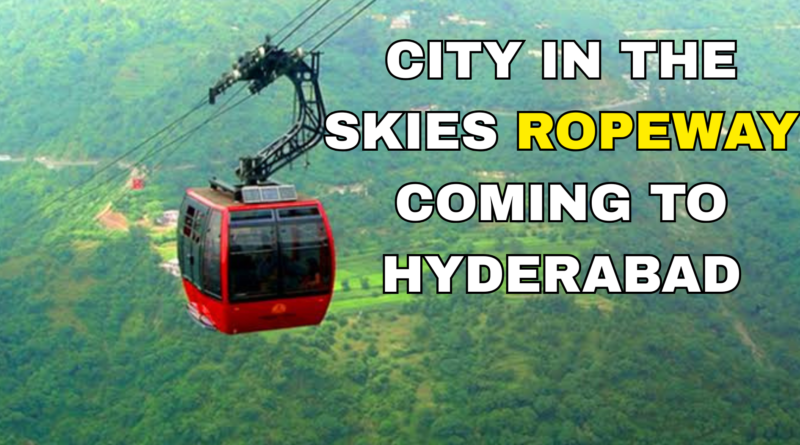CITY IN THE SKIES: ROPEWAY COMING TO HYDERABAD
The Unified Metropolitan Transport Authority (UMTA) has taken a significant step towards addressing the growing traffic issues in Hyderabad by unveiling an innovative transportation project. In collaboration with the Telangana Tourism Department, UMTA has proposed the establishment of a ropeway system in key tourist destinations across the city. This plan aims not only to alleviate traffic congestion but also to enhance the overall tourist experience by offering a unique and scenic mode of travel.
The proposed ropeway system is expected to be a game-changer for the city’s transport infrastructure. Designed to function similarly to cable cars, the system will consist of a network of aerial cabins or gondolas that can transport passengers over congested urban zones. This mode of travel can bypass the usual traffic bottlenecks and provide a faster, more enjoyable commute for both tourists and locals.
Each ropeway cabin is projected to accommodate between six to ten people, making it an efficient choice for small groups or families exploring the city. These cabins will operate continuously during the day, with high safety standards and modern technology ensuring a smooth ride. The ropeway’s elevation will also offer a panoramic view of the city’s landmarks and landscapes, adding a memorable dimension to sightseeing.
Key tourist spots such as the Hussain Sagar Lake, Necklace Road, Birla Mandir, Charminar, and Golconda Fort are expected to be part of the initial route map. By connecting these hotspots through the ropeway, UMTA hopes to ease traffic flow in areas that often see heavy congestion due to tourist activity. This initiative will help decongest nearby roads and provide an exciting alternative to road transport.
In addition to solving traffic problems, this project aligns with the state’s broader vision of promoting eco-friendly transport solutions. Ropeway systems consume significantly less energy compared to traditional vehicles and produce minimal air and noise pollution. This shift towards sustainable mobility options reflects Hyderabad’s ambition to become a smarter, greener city.
The collaboration with the Tourism Department ensures that the project is also geared toward boosting tourism revenue. By making travel between attractions more convenient, the city can encourage longer stays and increased spending by tourists. The unique appeal of aerial sightseeing is also expected to attract more visitors, including international travelers.
Furthermore, the ropeway system is seen as a safer option in densely populated urban areas. Unlike road transport, which is prone to accidents and delays, ropeways follow a fixed path and schedule, reducing the chances of unforeseen disruptions. Regular maintenance checks and high safety protocols will be implemented to ensure passenger security.
UMTA officials are currently conducting feasibility studies and engaging with global experts in urban ropeway design. These consultations will help determine the most suitable routes, the technology to be adopted, and the investment required. Environmental impact assessments are also being carried out to ensure the project does not disrupt the local ecology.
Public feedback has been largely positive, with many residents expressing excitement over the idea of a ropeway system in the city. Citizens believe that this modern initiative will not only provide relief from daily traffic woes but also uplift the city’s image as a forward-thinking metropolis. Many are hopeful that the project will also generate new employment opportunities.
However, a few challenges remain. Land acquisition for ropeway stations, regulatory approvals, and funding models are areas that require careful planning and coordination among various departments. The officials are optimistic, stating that the project will be executed in a phased manner, starting with the most feasible and high-footfall areas.
If successful, the Hyderabad ropeway system could serve as a model for other Indian cities struggling with similar urban transportation challenges. It reflects a shift in policy thinking from merely expanding road networks to adopting creative, multi-modal solutions that blend efficiency with user experience.
In the coming months, detailed project reports (DPRs) will be submitted, and tenders will be floated for construction. With government support and public enthusiasm, the ropeway initiative has the potential to become one of Hyderabad’s most iconic infrastructure developments, blending functionality with innovation and giving a major boost to urban tourism and smart mobility.




